Awesome! Here are the James Webb Space Telescope’s first pictures
From a stellar birthplace to the deepest view of the universe yet, the sights from this new telescope dazzle
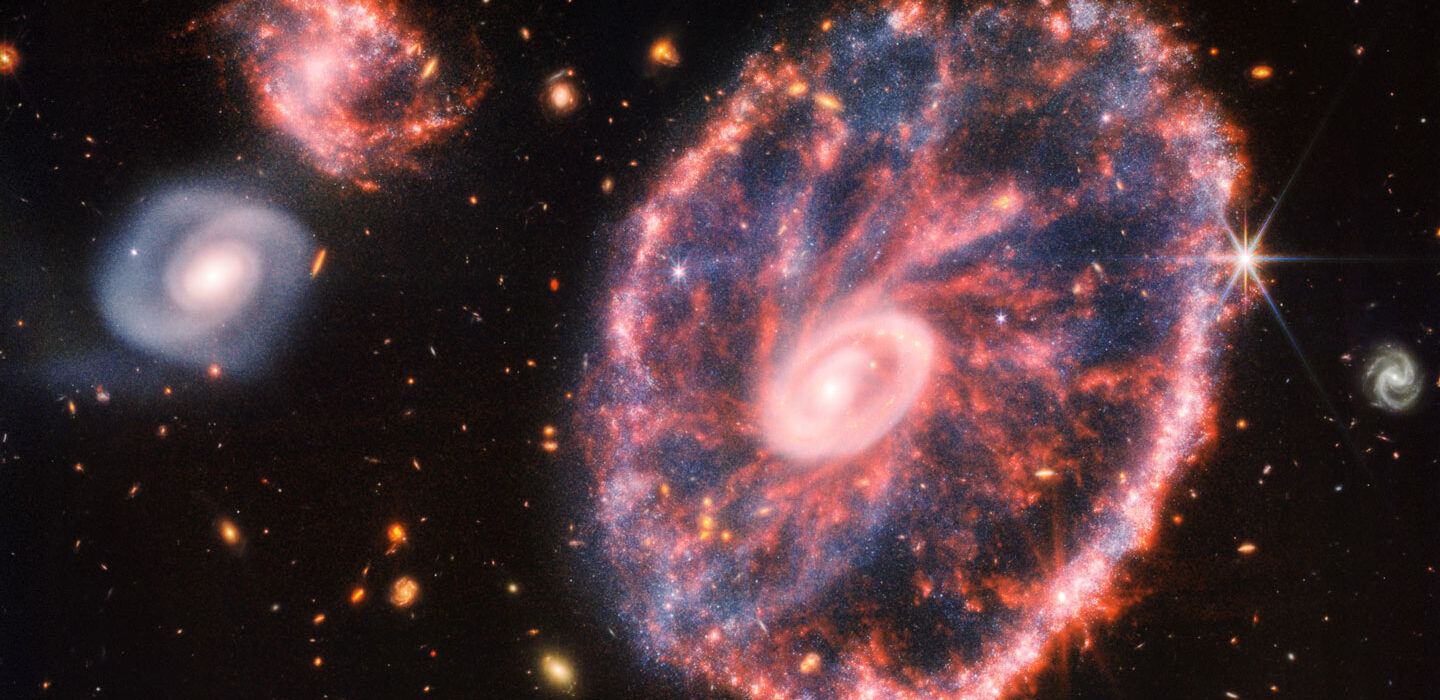
Bright and dusty spokes connect the inner and outer rings of the Cartwheel Galaxy in this new image from the James Webb Space Telescope (JWST). Two neighboring galaxies appear prominently to its left.
NASA, ESA, CSA, STScI and Webb ERO Production Team
This is it, guys. It’s what astronomers have been looking forward to for decades. NASA has just released the first images from NASA’s new James Webb Space Telescope, or JWST. The pictures, which started rolling out on July 11, are allowing humanity to see farther into space — and more clearly — than ever before.
These stunning views include a stellar birthplace and a nebula surrounding a dying star. JWST also homed in on a group of closely interacting galaxies and a distant exoplanet. Three weeks after the first batch of images, NASA unveiled the breathtaking image of the Cartwheel galaxy. It was still reeling from a run-in with a smaller galaxy 400 million years ago.
The universe through JWST’s eyes is just “really gorgeous,” said Jane Rigby at a July 12 briefing. “It’s teeming with galaxies.” Rigby is the telescope’s operations scientist. She works at NASA’s Goddard Space Flight Center in Greenbelt, Md. “Everywhere we look,” Rigby pointed out, “there’s galaxies.”
“We can’t take [an image of] blank sky” with this instrument, she noted. Wherever this eye in the sky looks, it spies crowds of objects.
Going deep
The incredible first image unveiled from JWST shows thousands of galaxies about 13 billion light-years away. Their light spent almost the entire age of the universe traveling to Earth. So that picture shows what these galaxies looked like shortly after the Big Bang.
The James Webb telescope spotted faint distant specks of light with the help of a closer cluster of galaxies. That cluster is about 4.6 billion light-years away. The galaxy cluster’s mass distorts spacetime in such a way that objects behind it appear magnified. This helped the telescope zoom in on galaxies in the very early universe.
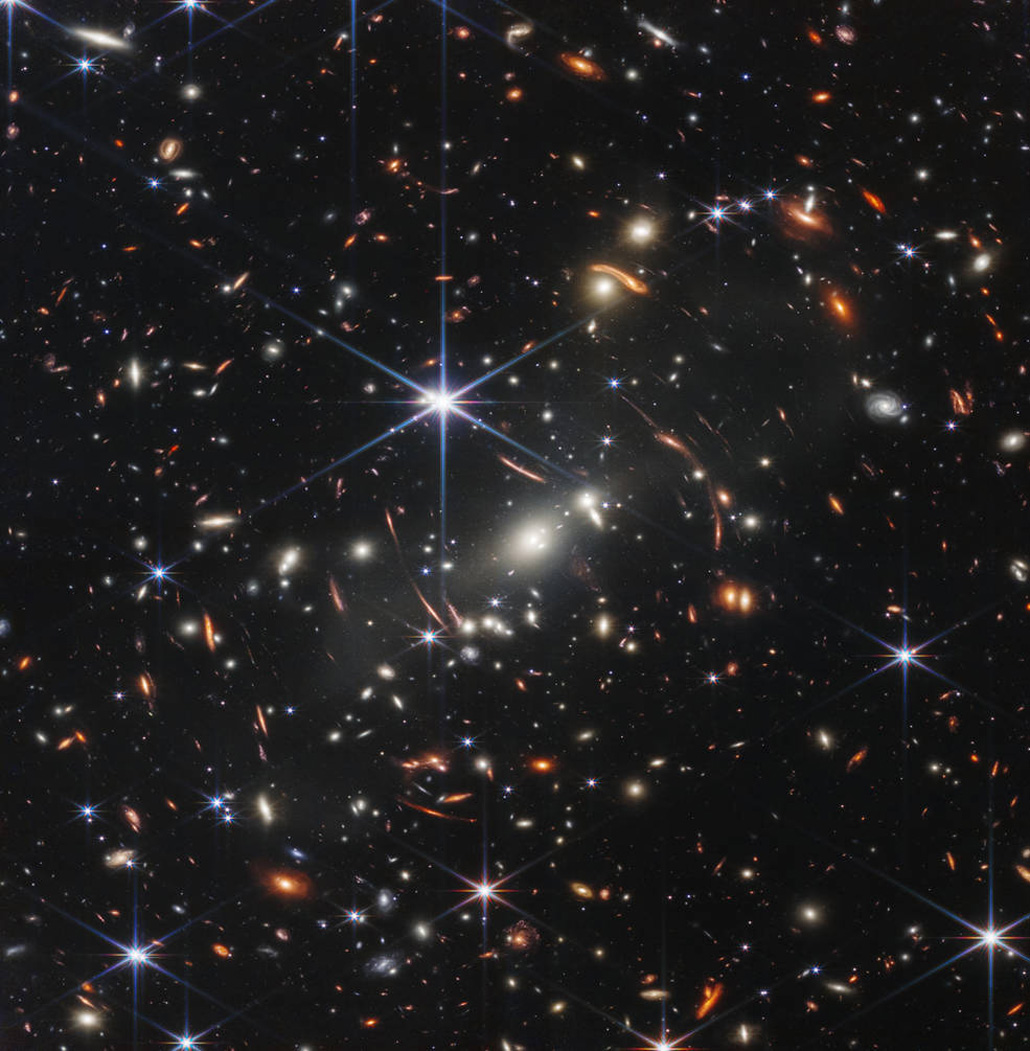
But even with such a celestial assist, other telescopes could never see so far back in time. One reason JWST could: It’s big. Its mirror is a whopping 6.5 meters (21 feet) across. That’s nearly three times wider than the Hubble Space Telescope’s mirror. JWST also sees light in infrared wavelengths. These are ideal for viewing distant galaxies.
With this telescope, “There’s a sharpness and a clarity we’ve never had,” Rigby explains. “You can really zoom in and play around.”
The first image that NASA released offers the deepest view of the cosmos yet. But “this is not a record that will stand for very long,” says Klaus Pontoppidan. “Scientists will very quickly beat that record and go even deeper,” he predicts.
Pontoppidan is an astronomer at the Space Telescope Science Institute in Baltimore, Md. He spoke about JWST at a news briefing on June 29.
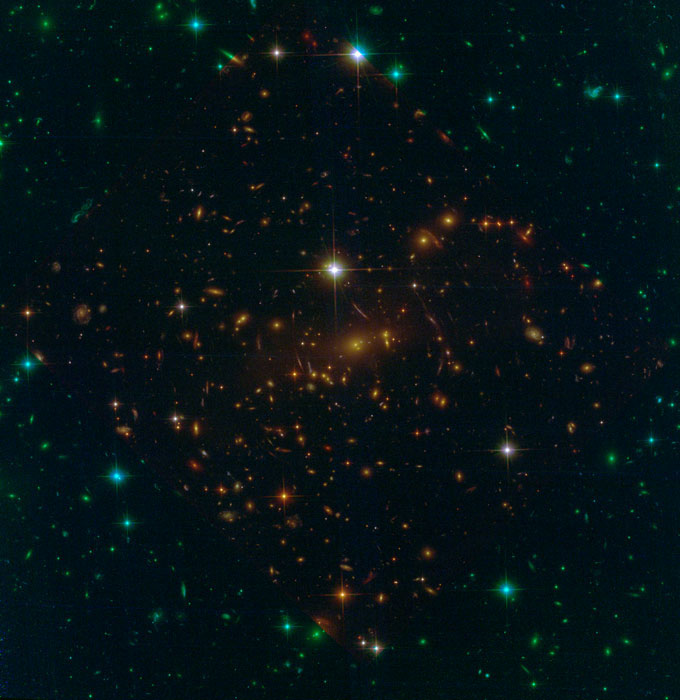
JWST wasn’t built only to peer farther back in time than ever before. The first images and data showcase space scenes both near and far — from single stars to entire galaxies. They even provides a peek into the chemical makeup of a far-off planet’s atmosphere.
JWST is an international collaboration between NASA, the European Space Agency (or ESA) and the Canadian Space Agency. Mark McCaughrean is a science advisor to ESA. The telescope’s first released images had been taken over a period of just five days. And now, he explained, “Every five days, we’re getting more data.” So what the new telescope has shown us, he noted, is “just the beginning.”

Educators and Parents, Sign Up for The Cheat Sheet
Weekly updates to help you use Science News Explores in the learning environment
Thank you for signing up!
There was a problem signing you up.
Cosmic cliffs
One of JWST’s first images shows the “Cosmic Cliffs.” This collection of dust and gas is part of the huge Carina nebula. Here, some 7,600 light-years from Earth, many massive stars are being born. The Hubble Space Telescope created images of this nebula in visible light. JWST now shows the nebula’s “infrared fireworks,” Pontoppidan says. Because the telescope’s infrared detectors can see through dust, the nebula appears especially spangled with stars.
“We’re seeing brand-new stars that were previously completely hidden from our view,” noted Amber Straughn. A NASA Goddard astrophysicist, she too spoke at the July 12 briefing.
But newborn stars aren’t all JWST can see. Molecules in the dust around the stars also glow. Strong winds from baby stars in the top of the image are pushing and sculpting a wall of gas and dust that runs across the middle.
“We see examples of bubbles and cavities and jets that are being blown out from newborn stars,” Straughn said. Such gas and dust are the raw material for new stars. These are also the ingredients for new planets.
“It reminds me that our sun and our planets — and ultimately us — were formed out of this same stuff,” Straughn said. “We humans really are connected to the universe.”
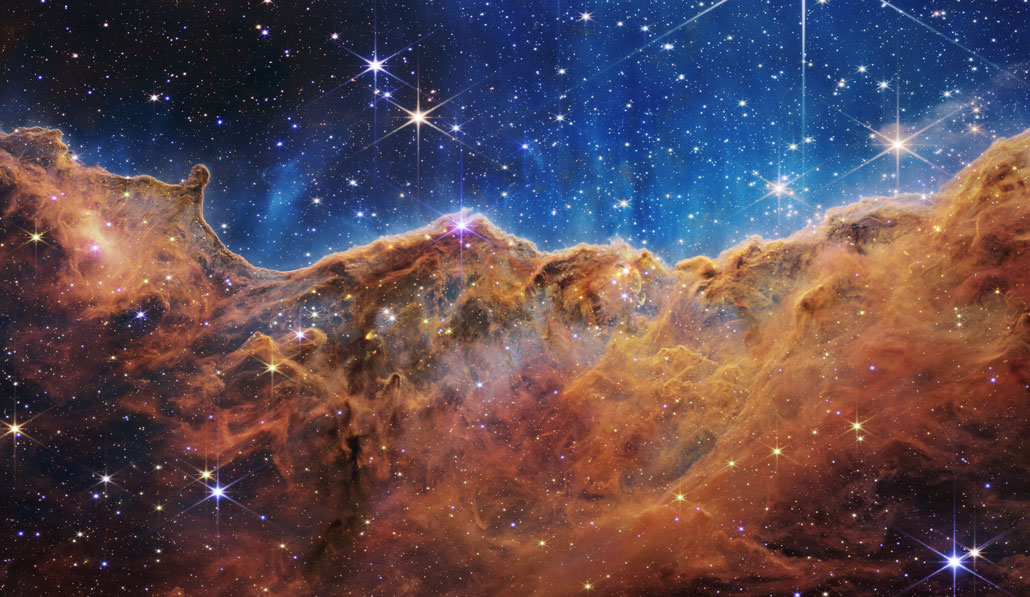
Foamy nebula
Next up among JWST’s first images: the Southern Ring nebula. This expanding cloud of gas and dust surrounds a dying star some 2,000 light-years from Earth. In old Hubble images, this nebula looks like an oval-shaped swimming pool — one with a fuzzy orange deck and a bright diamond in the middle. (That dazzling core is a white dwarf star.) JWST now expands this view.
The new image shows more tendrils and structures in the gas. “You see this bubbly, almost foamy appearance,” said Karl Gordon. A JWST astronomer, he works at the Space Telescope Science Institute.
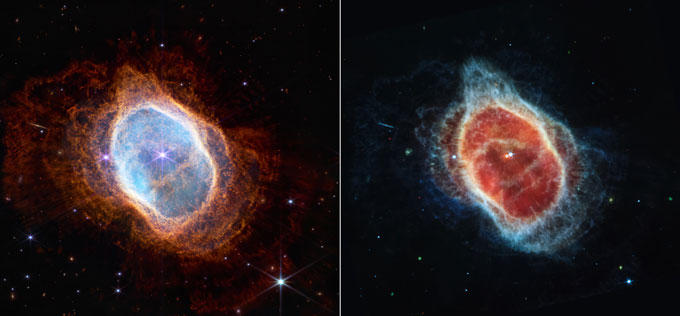
The left-hand image captures near-infrared light from JWST’s NIRCam instrument. The center appears blue due to hot, electrically charged gas. That gas has been heated by the white-dwarf star. The foaminess in that picture points to molecular hydrogen. These hydrogen molecules formed as dust expanded away from the center. Rays of light escape the nebula like the sun peeking through patchy clouds.
The right-hand image was taken by JWST’s mid-infrared camera, or MIRI. Here, the outer rings look blue. Those rings trace hydrocarbons forming on the surface of dust grains. The MIRI image also reveals a second star at the nebula’s core.
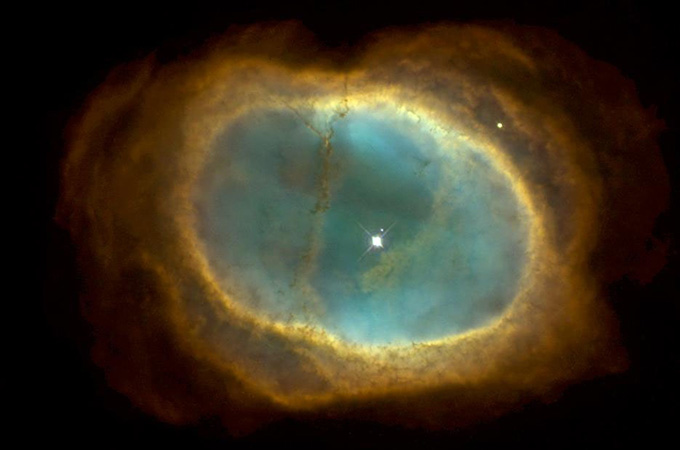
A galactic five-some and distant exoplanet
Stephan’s Quintet is a group of galaxies some 290 million light-years away. Four of the five are close together and engaged in a gravitational dance. One member is passing through the core of the cluster. (The fifth galaxy in this quintet is not part of the tight-knit group. It’s much closer to Earth than the others. It just appears at a similar spot in the sky.) JWST’s images reveal more structure within these galaxies than ever before. They also show where stars are being born.
In an image from JWST’s MIRI instrument alone, the galaxies look like wispy skeletons reaching toward each other. Two galaxies appear close to merging. And in the top galaxy, evidence of a supermassive black hole comes to light. Material swirling around the black hole is heated to extremely high temperatures. That piping-hot gas glows in infrared light as it falls into the black hole.
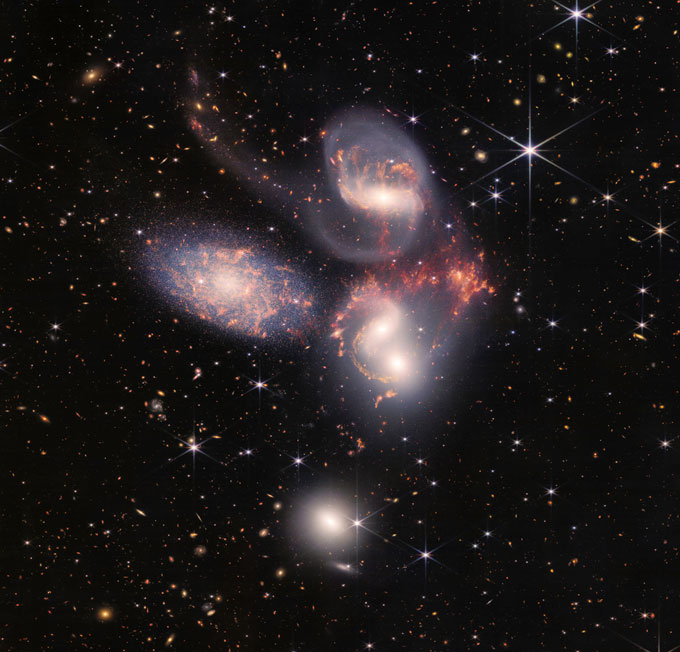
Another JWST image is clearly different from the others. It offers a peek at a distant planet orbiting another star. The spectrum of light wavelengths it shows come from the star WASP 96. On its way to us, its light passes through the atmosphere of a gas giant exoplanet known as WASP 96b.
“You get a bunch of what looks like bumps and wiggles [in that spectrum of light],” notes Knicole Colón. She’s a NASA exoplanet scientist. Those bumps and wiggles are evidence of water vapor in WASP 96b’s atmosphere, she explains.
This planet has about half the mass of Jupiter. It orbits its star every 3.4 days. Until now, astronomers thought it had a clear sky. JWST data now show signs of clouds and haze.
A ‘cartwheel’ in space
A more recently released JWST image shows sites of intense star formation throughout a galaxy known as the Cartwheel. About 500 million light-years from Earth, it gets that name from its bright inner ring and colorful outer ring. Astronomers think it used to be a large spiral like the Milky Way — until a smaller galaxy smashed through it.
In images from other telescopes, the space between those rings appeared shrouded in dust. But JWST’s image shows new stars forming. Some are emerging in spoke-like patterns between the central ring and the outer ring. Although the process for this is not well understood, these star births are likely aftereffects of that earlier collision with another galaxy.
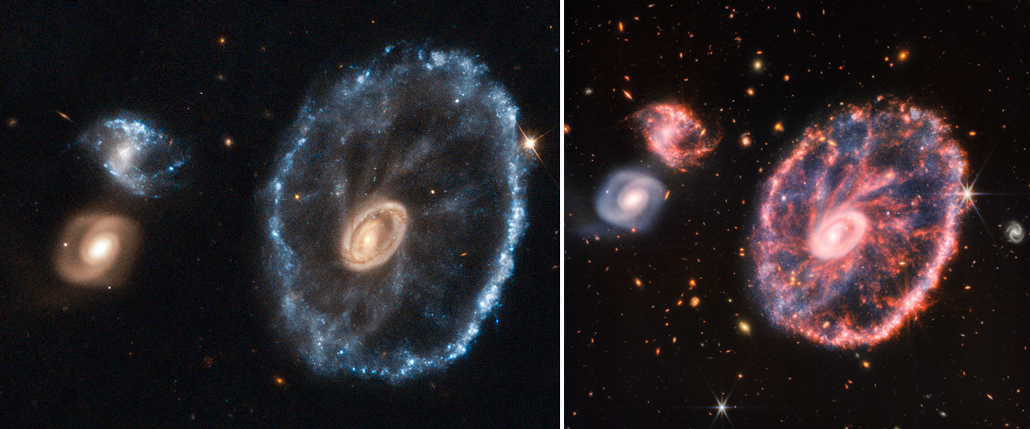
Ring galaxies are rare. Galaxies with two rings are even more unusual. The Cartwheel’s strange shape means that the long-ago collision set up multiple waves of gas rippling back and forth. It’s like if you drop a pebble in the bathtub, explains Pontoppidan. “First you get this ring. Then it hits the walls of your bathtub and reflects back, and you get a more complicated structure.”
That likely means that the Cartwheel Galaxy has a long road to recovery. So astronomers don’t know what it will look like in the end. As for the smaller galaxy that caused all this mayhem, it didn’t stick around to get its picture taken. “It’s gone off on its merry way,” Pontoppidan says.
A long time coming
Scientists first dreamed up the idea for JWST back in the 1980s. After years of delays in its planning and construction, the telescope finally launched in December 2021. It then unfolded and assembled itself in space. It also had a long way to go. It traveled 1.5 million kilometers (0.93 million miles) from Earth to a position that would offer it a stable spot for viewing. There, the telescope aligned its huge main mirror (which is made up of 18 honeycomb-shaped pieces). It also prepared its instruments to collect data.
Throughout all this, hundreds of things could have gone wrong. But the telescope unfurled as planned and quickly got to work. Its science team back on Earth released some early teaser images taken while JWST was prepping its instruments for real data collection. And even these practice shots showed hundreds of distant, never-before-seen galaxies. The images now being released are the first non-test pictures.
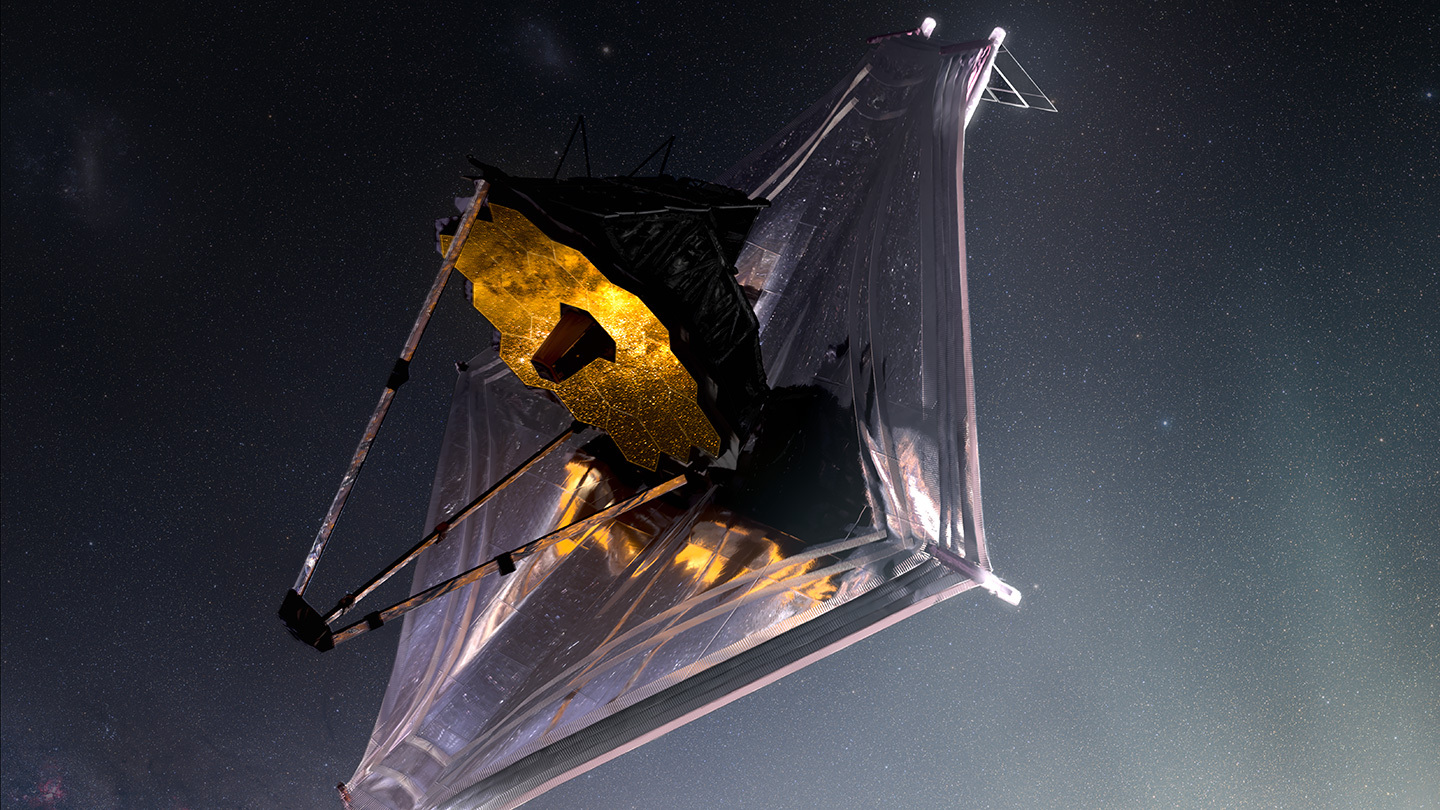
Researchers will now use those data to start unraveling mysteries of the universe.
This telescope “sees things that I never dreamed were out there,” John Mather says. He’s JWST’s senior project scientist. He works at NASA’s Goddard Space Flight Center.
The whole JWST team was privileged to see something new every day for weeks as the telescope sent back its first images. They could be “a very unifying thing,” says Alyssa Pagan. She’s an image processor at the Space Telescope Science Institute. “The world is so polarized right now. I think it could use something that’s a little bit more universal and connecting,” she says. “It’s a good perspective, to be reminded that we’re part of something so much greater and beautiful.”
And, of course, “there’s lots more science to be done,” Mather says. “The mysteries of the universe will not come to an end anytime soon.”
Asa Stahl contributed to this story.







